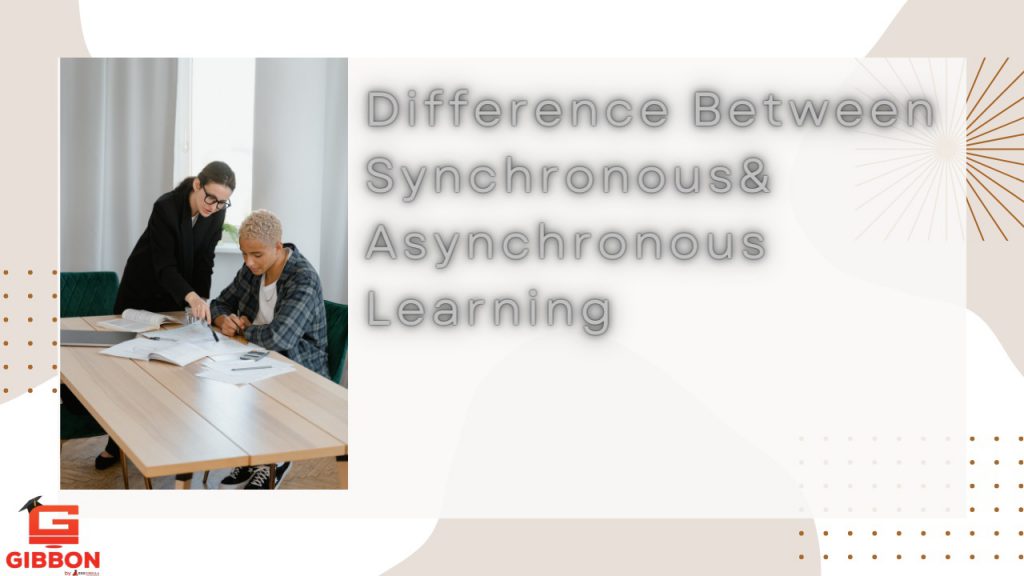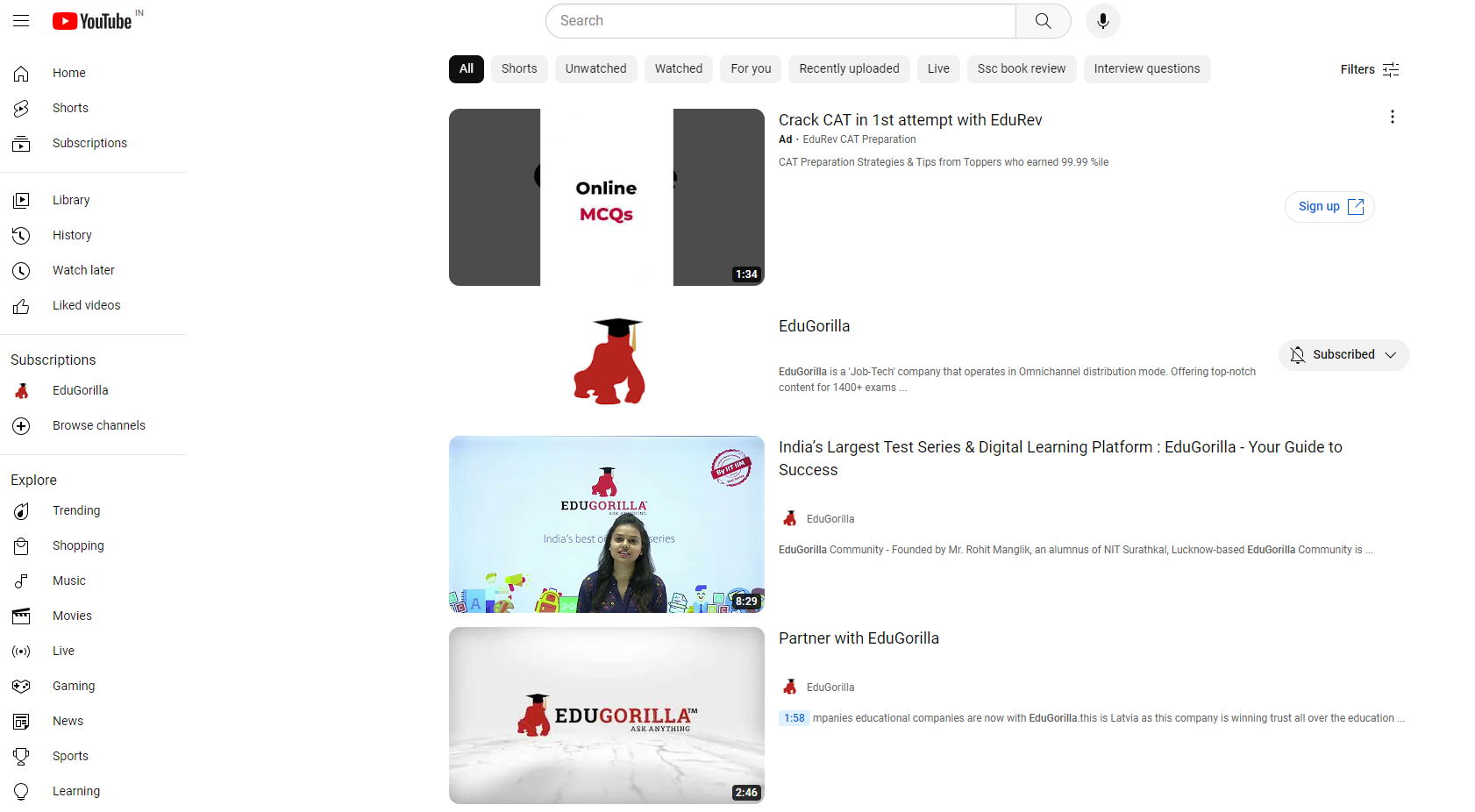We came across a variety of online technologies that ushered in a new era of education as the nature of education changed. Education has never been easier than it is now, thanks to breakthrough online technologies. A few terminologies in online education have been introduced to reflect contemporary advancements in education.

When hunting for a free online program, you might have come across the faces of asynchronous and synchronous. You may not yet comprehend what these terms mean, but you’re undoubtedly already considering your employment and other obligations, as well as how the program would fit into your calendar.
Synchronous and asynchronous learning are two of the most commonly used phrases. Before we get into the specifics of the differences between synchronous and asynchronous learning, let’s first define synchronous and asynchronous learning. Let’s have a look at what the phrases asynchronous and synchronous mean and how they differ.
What Is The Definition Of Synchronous Learning?
Synchronous Learning can be characterized as one-on-one interaction between the teacher and the student. Synchronous learning is focused on location and time. It is collaborative, and engagement takes place in a classroom or online via video conferencing, live chat, previous messaging, or phone conversations on real online teaching platforms. It entails active engagement from professors and students, as well as interactive conversations.
Students will be obliged to vote to attend a glass station each week, at the same time as a teacher and peers, despite the fact that they will be studying from a distance. The utilization of a live stream lecture and instructor led conversation isn’t the only synchronous online study option. In an online class group verb, the course and program determine which activities are included in asynchronous calls. A present to the entire class full stop in an online class group verb is not Venice, it’s empty text on a different form the course and program determine which activities are included in asynchronous calls.
- During class, students participate in real-time discussions.
- Live lectures, discussions, and student presentations are all part of the curriculum.
- Professors and students both attend class on a regular basis.
What is Asynchronous Learning?
Asynchronous learning refers to learning that is done according to your preferences. can you just learn at their own speed within a predetermined amount of time in Asynchronous learning. The applicant can assess and finish reading Formal letters assignments and other learning tools at any time during the one or two week term.
Is asynchronous learning preferred by students? It is not true for everyone. This format, according to experts, is perfect for students who are self-disciplined, prefer to work at their own pace and have unpredictable internet connections.
- As long as deadlines are met, students can finish assigned work at their own leisure.
- Students communicate with professors and other students via online forums and email.
- At any moment, students can access recorded lectures, readings, and homework.
When it comes to learning, there are two types: synchronous and asynchronous. There are variations between synchronous and asynchronous learning based on the following criteria.
- With relation to the classroom
- Using learning speed as a criterion
- In the context of training
- Communication in its broadest sense
- ‘On the foundation of education,’ says the author.
- Based on user feedback
- With relation to the classroom
In synchronous learning, learning and teaching take place in digital environments that mirror traditional classrooms. To be clear, the vast majority of these classes are not delivered online, with professors and students interacting in a live classroom setting. These classes require greater concentration and are more focused on the name. It also allows teachers to keep a constant eye on their students’ progress.
In other words, asynchronous learning provides students with prerecorded leg lessons for all lectures, implying that lecturers and students are unable to interact in real time. On the other hand, recorded classes allow students to take lessons whenever and wherever they want.

2. Using learning speed as a criterion
A student’s learning speed is determined by the speed of a specific group of candidates who are mentored by a common instructor or set of teachers in the synchronous mode learning method. This could be a disadvantage for children who naturally study at a slower pace.
Asynchronous learning allows students to set and follow their own schedule.
In this case, the asynchronous technique is ideal for such children.
3. In the context of training
Students can get live, in-person teaching in the synchronous learning method, which increases learning efficiency. As a result of this one-to-one training approach, teachers will be able to better focus on individual students.
Asynchronous learning substitutes pre-recorded internet video lessons for in-person education, giving students no real-world experience. Because such training films are created ahead of time before being made available to students, they do not take into account the individuals’ unique needs. Furthermore, no changes to the films may be made once they have been distributed to the students.
4. Communication in its broadest sense
In the synchronous method of learning, students can communicate with their lecturers via phone calls, real-time texting, or speaking directly during class. This allows for the delivery of critical information and modifications in real time.
Asynchronous learning, on the other hand, uses recorded audio messages to replace phone calls. These recorded messages may or may not appropriately address the students’ problems, and they rarely address each student’s particular concerns.
5. Based on user feedback
In synchronous learning, students receive immediate comments and feedback from their professors, teachers, or classmates. Similarly, during online classrooms, professors can immediately answer students’ questions and ensure that they are learning continually and without interruption.
In an asynchronous learning environment, students must wait patiently for a response from their course’s concerned teacher. Students should put down all of their concerns and questions in one statement and submit it to the instructor who is in charge of them. Furthermore, responses take a long time to arrive. As a result, information exchange takes longer and needs more effort than usual, making active teaching and learning more difficult.
We may conclude from the above discussion that each online learning approach has its own set of advantages and disadvantages. While neither model is objectively “better,” some students may benefit from an asynchronous atmosphere, while others may prefer a synchronous structure. Asynchronous coursework’s inherent flexibility is generally more suitable with the needs of students who have a busy job schedule.
ABOUT GIBBON
Gibbon is a Plug and Play solution offered by EduGorilla, for anyone with a skill to teach. Gibbon helps you to take your classes online and earn independently.
- Gibbon gives you the ability to conduct & record LIVE classes, host unlimited video courses, provide online mock tests, and conduct online tests with LIVE proctoring abilities.
- Gibbon also provides you ready-made content of 1600+ Competitive, Entrance, and Academic exams from around the country.
- Gibbon helps you reach out to more students online and get a complete marketing setup.
- We have helped more than 3000 Brands, 10000 Institutes, 20000 Teachers and 2 Crore Students, transform their education and future.
Gibbon stands for “Online-Ready Teachers for a Future-Ready India”.To get started, book your free demo now.






